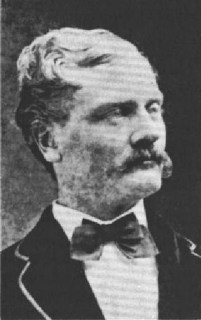Independent chiefdoms were ruled by a supreme chief, or aliʻi ʻaimoku (chief possessing an island or district); at times referred to as aliʻi-nui (great chief) to distinguish him from lesser chiefs.
Typically this position was attained by inheritance, as holder of highest rank among the nobility; however it could also be gained by force by a relative, lesser chief or outside invader.
The aliʻi-nui had complete control over his lands and production, as well as the lives of his subjects. He derived these rights from his familial relationship with the Hawaiian gods.
Poʻipū, Kauai was a Royal Center for the southern shoreline of Kauaʻi. Here resided high chiefs Kukona (7th aliʻi ʻaimoku) and Manokalanipo (8th) when on the south-side; and they were kept in paramount chiefly control until the last Prince Keliiahonui, son of Kaumualiʻi (23rd) in the 1830s.
Kukona (7th aliʻi ʻaimoku (high chief or king) of Kauaʻi), whose name in Hawaiʻi became a symbol of the very highest ideals of chivalry in battle, was born in Kōloa and fought his defining battle at Po’ipū. His year of birth is estimated at around 1405.
In the first part of the 15th century, Kalaunuiohua, the ambitious chief of Hawaiʻi who had already conquered three other islands, tried to seize Kauaʻi. He was accompanied into battle by the combined armies and chiefs of Maui, Molokai and Oʻahu.
The war is known as the War of Ka-welewele. The much smaller forces defending Kauaʻi, led by Kukona and his son Manokalanipo, soundly defeated the invaders after leading them inland and then surrounding them at the shore.
Kukona captured all four chiefs of Hawaiʻi, Oʻahu, Maui and Molokai.
He had the opportunity to kill them all and assume leadership over the islands. However, he preferred peace and allowed them to return safely home with a promise that they never again make war on Kauaʻi.
As noted by Fornander: “The war with the Hawaiʻi chief, and the terrible defeat and capture of the latter, as well as Kukona’s generous conduct towards the four chiefs who fell into his hands after the battle, brought Kauai back into the family circle of the other islands, and with an éclat and superiority which it maintained to the last of its independence.”
This peace lasted for four hundred years; the peace was called ka lai loa ia Kamaluohua (The Long Peace of Kamaluohua – named for the captured Maui chief who, while Kukona was sleeping, stated to the others, “Let us do no hurt to Kukona, because he has been kind to us. Here we are in his hands, but he has not put us to death. Let us then treat him kindly.” (Malo))
Fast forward a few centuries and King Kamehameha I launched his first invasion attempt on Kaua‘i in April of 1796, having already conquered the other Hawaiian Islands, and having fought his last major battle at Nuʻuanu on O‘ahu in 1795.
Kaua‘i’s opposing factions were extremely vulnerable as they had been weakened by fighting each other.
About one-fourth of the way across the ocean channel between O‘ahu and Kaua‘i, a storm thwarted Kamehameha’s warriors when many of their canoes were swamped in the rough seas and stormy winds, and then were forced to turn back.
Some of the advance troops made it to Kauai and were killed when they reached shore. Kaua‘i remained unconquered.
In 1804, King Kamehameha I moved his capital from Lāhainā, Maui to Honolulu, and continued planning an attack on Kauai. Kamehameha’s forces for this second invasion attempt included about 7,000 Hawaiians along with about 50 foreigners (European.)
Kamehameha’s second attempt was thwarted again when an epidemic, thought to be typhoid or dysentery, swept through the population, killing thousands of native Hawaiians. The sickness delayed for a second time Kamehameha’s goal of conquering Kaua‘i.
In a renewed effort for a large-scale attack on Kaua‘i, Kamehameha began assembling a formidable armada of sailing ships in Waikīkī, using foreigners to construct the vessels.
The invasion never took place.
In the face of the threat of a further invasion, in 1810, Kaumuali‘i decided to peacefully unite with Kamehameha and join the rest of the Kingdom of Hawaiʻi. The agreement with Kaumualiʻi marked the end of war and thoughts of war across the archipelago.
Today, people of Kauai proudly proclaim that their island was never conquered over the centuries, even when larger armies attempted to do so. The image shows a Kauai map by Kalama. (Lahainaluna Engraving)
Follow Peter T Young on Facebook
Follow Peter T Young on Google+
Follow Peter T Young on LinkedIn
Follow Peter T Young on Blogger















